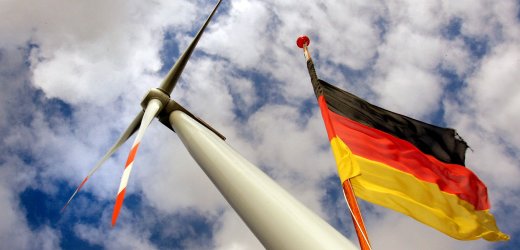In the first half of 2014, the German market for onshore wind turbines grew by around 66 percent year over year, with some 1,723 megawatts having been installed.
The sector attributes this strong growth to some overlapping effects, specifically a race to get projects completed before the new Renewable Energy Act (dubbed EEG 2.0) takes effect in August along with specifications of where turbines can be built in a number of German states. In the long run, an EEG 3.0 will have to provide a reliable investment environment and a calculable growth rate.
The German onshore wind power market posted strong growth in the first half of 2014, according to the figures collated on behalf of the German Engineering Federation VDMA Power Systems and the German Wind Energy Association (BWE) by Deutsche WindGuard. Some 1,723 megawatts of capacity was newly installed on land, equivalent to 66 percent growth over the 1,038 megawatts newly installed in the first half of the previous year. “I would say the reason is overlapping effects that partially reinforce each other,” Lars Bondo Krogsgaard, board member at VDMA Power Systems, explained at the press conference. “We are witnessing a race brought about by the uncertainty resulting from the discussion about power prices and distance rules ahead of the EEG 2.0. Because investors were not sure what the effect of the EEG would be in 2014, they have rushed to finish their onshore wind power projects.” The effect is well known, but it made itself felt this year even more. On the one hand, various German states have set aside new areas for wind turbines, which were used in 2014. On the other, the sector wanted to complete projects before the states are given more leeway to adopt their own distance rules for the installation of wind turbines.
In the first half of the year, at least 260 megawatts of new capacity also replaced old turbines that were decommissioned in a process called “repowering”; in the first two quarters of 2013, at least 64 megawatts had been dismantled. By the end of the year, between 3,300 and 3,700 megawatts of newly installed capacity (gross) is expected to be added. “By the end of the year, Germany will probably have 26,000 turbines with an installed capacity of at least 37,000 megawatts connected to the grid. Onshore wind power will thus make up an even greater share of power supply at up to 10 percent. Affordable onshore wind power is thus stabilizing power prices and supporting the German government’s growth targets for renewables at a time when the growth of photovoltaics is stagnating and biomass is expected to shrink,” said BWE President Hermann Albers. He does not, however, expect 2015 to be equally dynamic.
The goal for the next few years is a reliable, stable growth level. VDMA Power Systems and the BWE will therefore provide input within the German Ministry for Economic Affairs and Energy’s platforms and make its expertise available for a new power market design. The organizations will provide their own specifications for the new rounds of bidding to be discussed in the EEG 3.0 debates. “Wind turbine manufacturers can position themselves with innovative products. The net growth corridor door of 2,500 megawatts per year plus dismantled capacity provides leeway for new concepts. A bidding process will only bring the sector deeper into the market if the process takes account of the specific technical properties of onshore wind turbines,” Krogsgaard says. Albers adds that uncertainties remain, and there is time pressure. “We will take part in the discussion and work to make sure that citizen input, acceptance, and competition between market players are insured. In addition, there are other questions for a concept that is to take effect in 2017 and for new onshore wind power projects starting in 2019. Such projects have long time frames, so it is unclear how these market mechanisms can be tested in advance in pilot projects so they can be adapted to onshore wind power technology.”
Fact sheet: Status of land based wind energy development, 30 june 2014


